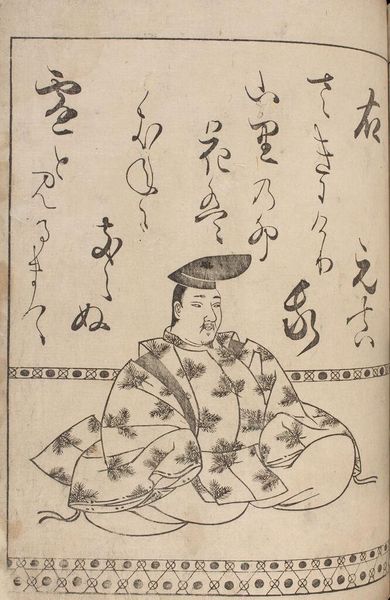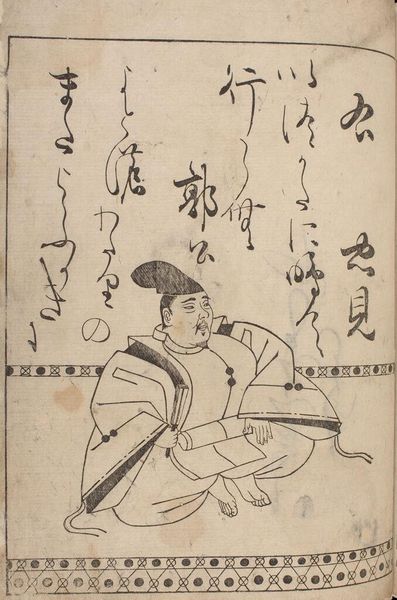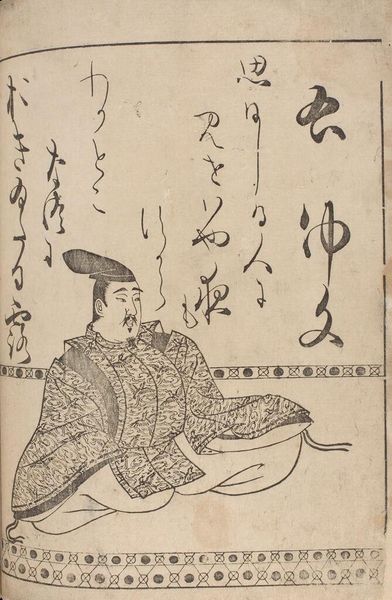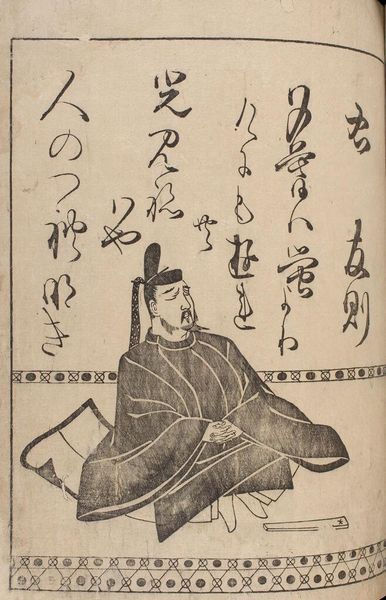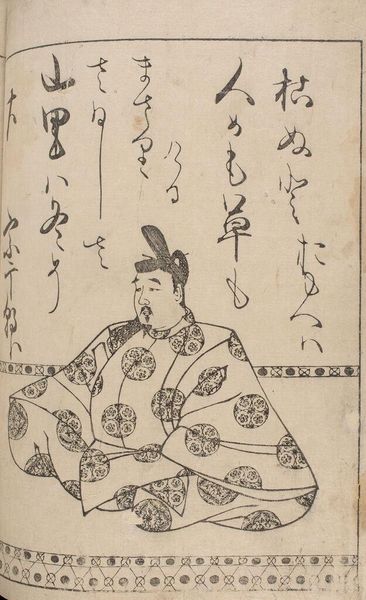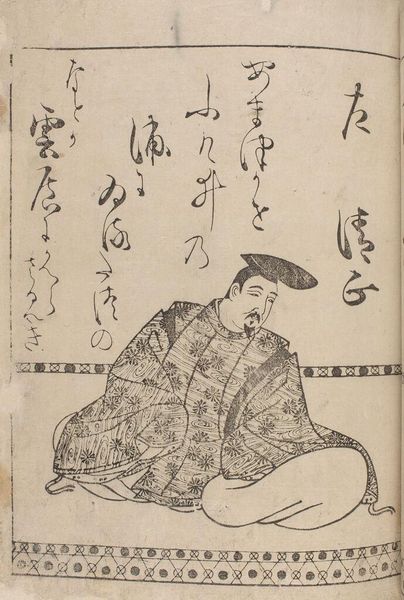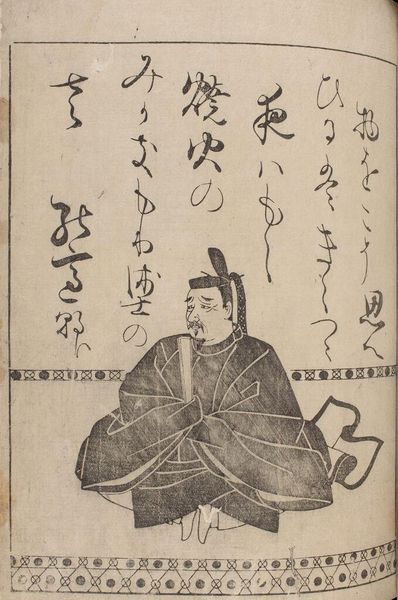
Poet Yamabe no Akahito (?-736) from page 11A of the printed book of "Thirty-Six Immortal Poets" (SanjÅ«rokkasen), KÅetsu edition c. 1610
0:00
0:00
Dimensions: H. 34.5 cm x W. 24.1 cm (13 9/16 x 9 1/2 in.)
Copyright: CC0 1.0
Editor: Here we have "Poet Yamabe no Akahito" from "Thirty-Six Immortal Poets," by Hon'ami Kōetsu. It's a printed book page featuring calligraphy and an illustration of a seated figure. I'm curious about the relationship between the text and the image. What can you tell me about how this work intersects with the history of Japanese poetry and representation? Curator: This piece speaks to the codification of poetic and artistic ideals during the Momoyama period. Consider how Kōetsu, from a family of sword polishers, actively shaped cultural identity through his art. The "Thirty-Six Immortal Poets" anthology itself is a project of canonization, defining a lineage. How does this representation of Akahito, through both image and text, contribute to constructing that cultural narrative and its potential exclusions? Editor: That's fascinating. So, it's not just about appreciating the aesthetic qualities, but also understanding the power dynamics at play? Curator: Precisely. Think about who gets included in these canons, and what values their inclusion reinforces. It prompts us to question whose stories are being told, and whose are being marginalized. Editor: I never thought about it that way before. It gives me a new perspective on how to read art history.
Comments
No comments
Be the first to comment and join the conversation on the ultimate creative platform.
